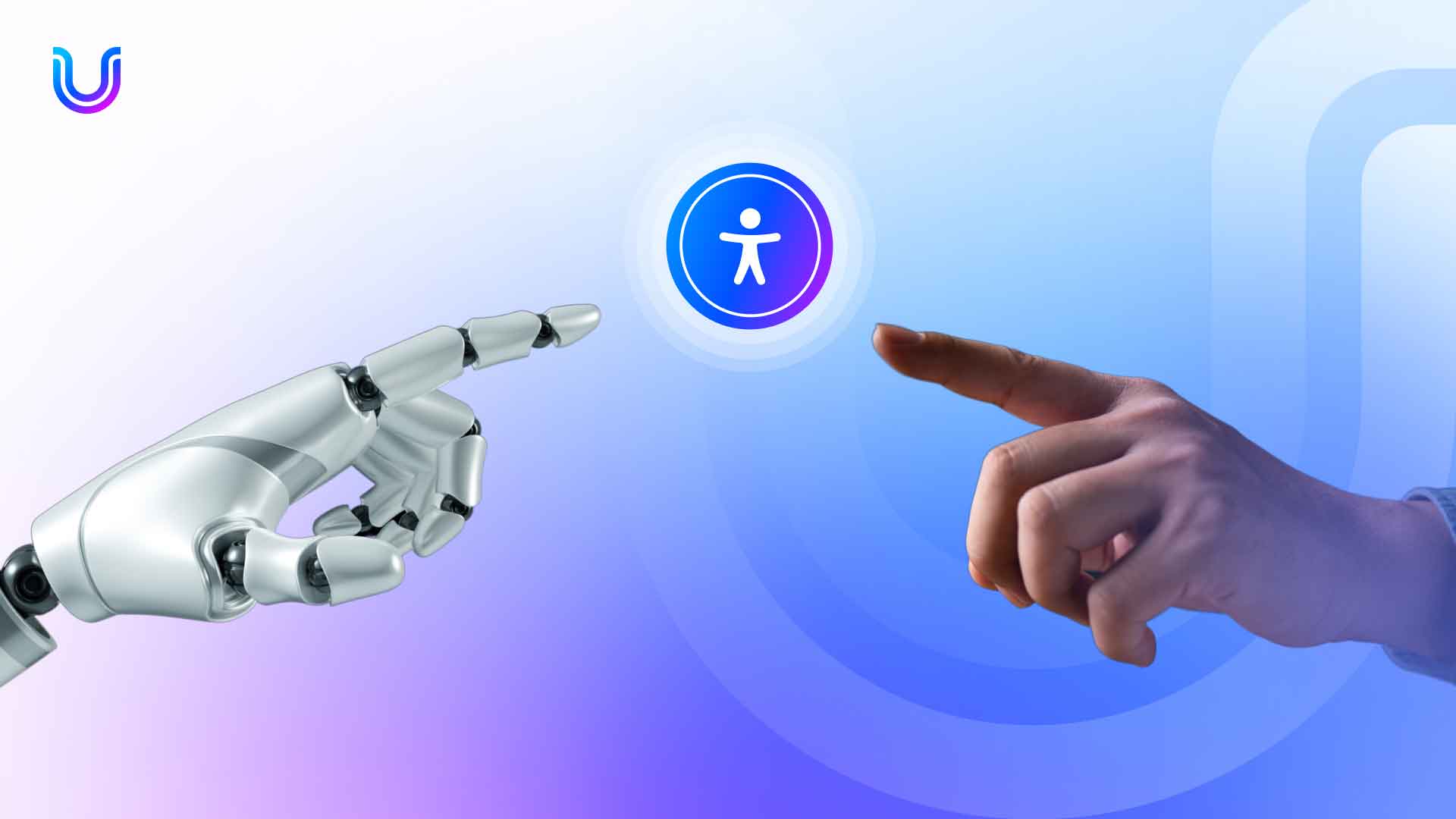Digital Therapy: Can Technology Support Mental Health?

Technology touches our lives in more ways than we might realize—it extends far beyond the glow of our devices, and has the power to shape our mental and emotional well-being in significant ways. We take a look at the relationship between our digital interactions and mental health. We’ll discuss how technology and mental health interconnect, enhancing our access to information and support networks while offering new avenues for mental health advocacy. We’ll also consider some of the challenges, including exclusion and barriers to digital spaces that can all have an impact on peoples’ mental health.
What is mental health?
Mental health is the holistic state of our emotional, mental, and social wellness, affecting how we think, feel, and act. It’s defined not just by the lack of mental health disorders but also by positive attributes, like coping with stress, maintaining productivity, and engaging positively with our communities.
Each year, 1 in 4 people will encounter some form of mental health issue, and on a weekly basis, 1 in 6 individuals report facing common mental health challenges such as anxiety and depression.
Throughout an individual’s lifetime, their mental health diagnosis can change multiple times. Some complex conditions are quantified by the number of people who receive a particular diagnosis at any point in their lives or within a specific year.
There are many different types of mental health illnesses with some of the most common including:
- Depression: Depression is a prevalent and significant health condition that impacts mood, thought processes, and behavior. However, it’s important to note that treatment options are available.
- Anxiety: Anxiety disorders are the most common mental illness in the United States, affecting 40 million adults in the United States age 18 and older, or 18.1% of the population every year.
- Post-traumatic stress disorder (PTSD): PTSD is a psychiatric disorder that can occur in people who have experienced or witnessed a life-threatening event, like combat, a natural disaster, a car accident, or sexual assault.
- Schizophrenia: Schizophrenia is a chronic and severe mental disorder that affects a person’s ability to think, feel, and behave normally.
- Eating disorders: Eating disorders are mental illnesses that involve abnormal eating habits and distorted body image.
Recognizing the varied landscape of challenges, it’s important to consider how the reach of tech for mental health intersects with these conditions, shaping and sometimes shifting our mental health experiences in today’s connected world. Let’s explore the multifaceted impact of tech on mental health.
How does technology affect mental health?
The integration of technology in supporting mental health stretches back to the 20th century. But it wasn’t until the personal computer and internet revolution of the 1990s that its role became truly transformative in mental health care. Initially, computer-based applications were limited to providing psychoeducation and self-assessment tools.
With technological advancements over time, the collection of digital mental health tools has broadened considerably, now encompassing a wide range of applications designed to offer a wide spectrum of mental health interventions including:
-
Mobile Apps and Self-Help Tools
Several mobile apps have been developed to provide resources and self-help strategies for managing anxiety and depression. These apps often include mood tracking, relaxation exercises, cognitive-behavioral therapy (CBT) exercises, and psychoeducation to empower individuals to monitor and improve their mental well-being.
-
Online Therapy and Telehealth
Telehealth platforms enable individuals to access therapy and counseling services remotely, overcoming barriers like geographical distance and stigma. Online therapy is effective for a range of mental health conditions, including depression and anxiety. It allows individuals to receive evidence-based treatments like CBT through video calls or messaging.
-
Wearable Devices
Wearable technology, such as smartwatches and fitness trackers, can monitor physiological signals like heart rate, sleep patterns, and activity levels. These data can be valuable for identifying trends and triggers related to anxiety and depression and providing individuals with insights to manage their condition.
-
Virtual Reality (VR) Therapy
VR technology is increasingly used for exposure therapy in treating anxiety disorders like phobias and post-traumatic stress disorder (PTSD). VR creates controlled and immersive environments where individuals can confront and gradually desensitize themselves to their fears or triggers.
-
Artificial Intelligence (AI) and Chatbots
AI-powered chatbots and virtual assistants can provide immediate support and resources to individuals experiencing anxiety or depression symptoms. These tools can engage in text-based conversations, offering coping strategies, psychoeducation, and referrals to mental health professionals.
-
Digital Therapeutics
These are evidence-based, software-driven interventions designed to treat specific mental health conditions. They often involve interactive modules and assessments that guide individuals through therapeutic exercises.
7 apps revolutionizing mental health accessibility
In a time where many of us are deeply connected by technology, innovative companies are harnessing the potential to support mental health. By blending technological advancements with the professional expertise of mental health professionals, these organizations are shaping a new landscape for mental health support.
Let’s explore some of these pioneering companies and their cutting-edge solutions that are making mental well-being more accessible and effective than ever before:
1. Calm: Calm is a meditation and mindfulness app that offers a variety of guided meditations, breathing exercises, and sleep stories to help people reduce stress, improve sleep, and manage anxiety.
2. Headspace: Headspace is another popular meditation app that offers a variety of guided meditations, mindfulness exercises, and sleep stories. Headspace also has a dedicated focus on workplace mental health, offering programs for businesses to help their employees manage stress and improve their well-being.
3. Happify: Happify is a gamified mental health app that uses positive psychology techniques to help people increase their happiness and resilience. Happify offers a variety of games and activities that are designed to teach people positive thinking skills and help them develop a more positive outlook on life.
4. Talkspace: Talkspace is an online therapy platform that connects people with licensed therapists for video or text-based therapy sessions. Talkspace makes therapy more affordable and accessible by offering a variety of subscription plans to choose from.
5. BetterHelp: BetterHelp is another online therapy platform that connects people with licensed therapists for video or text-based therapy sessions. BetterHelp offers a variety of features, including a matching tool to help you find the right therapist for your needs.
6. SonderMind: SonderMind is a non-profit organization that provides free and low-cost mental health care to people in need. SonderMind offers a variety of services, including therapy, medication management, and case management.
7. The Trevor Project: The Trevor Project is a non-profit organization that provides crisis intervention and suicide prevention services to LGBTQ youth. The Trevor Project offers a variety of services, including a hotline, chat, and text messaging.
How do awareness initiatives support mental health?
Beyond technological advancements, societal awareness of mental health is also on the rise, illustrated by initiatives such as Mental Health Awareness Week in May, which confronts stigma and educates the public on mental health matters. World Mental Health Day, observed on October 10th, serves as a call to action for mental health awareness and stigma elimination, while International Self-Care Day on July 24th champions the importance of self-care for well-being. These observances are vital in advocating for proactive mental health measures.
Fundraising during awareness events is also essential, as it secures resources for creating and distributing these tech tools, making them widely available.
There are also training opportunities, workshops and conferences such as the Mental Health America Conference, where meaningful dialogues on how to strengthen commitments to promote well-being are generated.
Organizations like Lifeline utilize awareness campaigns to highlight crucial crisis support, including hotlines and text services, enabling instant access to help via technology, thus reinforcing the mental health support system.
Web accessibility: opening digital doors for people with disabilities
As we celebrate innovations in mental health technologies, it’s vital to pivot towards the often overlooked issue of accessibility for people with disabilities.
As technology advances, its potential to support many individuals is evident, yet it’s imperative that it remains accessible and functional for all, particularly for the estimated 1.3 billion people who experience significant disability, This inclusivity ensures that mental health technologies are equally beneficial to those with visual, auditory, motor, or cognitive impairments, embracing a truly universal design.
How can you ensure digital mental health services are accessible?
Creating mental health platforms that are accessible to individuals with disabilities requires thoughtful design and a commitment to universal usability. Here are some key considerations:
1. Simplicity and Clarity: Employ a clear, uncluttered layout with straightforward navigation to avoid overwhelming users with cognitive challenges like anxiety or ADHD.
2. Customizable Interfaces: Incorporate features that allow users to control visual elements, such as adjusting colors or font sizes, to accommodate visual impairments and reduce sensory overload for those with sensory processing issues.
3. Alternative Text: Use alt text for images and provide transcripts for videos, aiding those with visual or auditory disabilities in accessing information.
4. Keyboard Navigation: Ensure that all functions can be accessed with a keyboard alone, benefiting users with motor disabilities who cannot use a mouse.
5. Consistent Structure: Maintain a consistent layout throughout the platform, with predictable patterns for content and menus, which is especially helpful for users with cognitive difficulties.
6. Avoiding Automatic Media: Refrain from using auto-playing audio or video, which can be startling or difficult for individuals with sensory processing disorders or autism.
7. Clear Language: Use plain language to communicate effectively, making content more digestible for all users, including those with cognitive disabilities or depression.
Accessible design illustrates to users with disabilities that their requirements are recognized, their challenges understood, and their well-being valued. It is through this lens that we must view the development of mental health technology: as a tool that is by design empathetic, approachable, and empowering for all.
By committing to these principles, we can create a digital environment where support is not only available but also accessible, allowing everyone the opportunity to seek help, engage in self-care, and enjoy the benefits of technology’s vast potential to improve mental health outcomes.
For a deeper understanding of accessible design principles, we invite you to explore the wealth of information available on the Web Content Accessibility Guidelines (WCAG). These guidelines offer a comprehensive framework for creating technology that’s inclusive for all.
UserWay: powering accessible mental health tech
UserWay stands at the forefront of combining AI-powered technology with accessibility, deploying artificial intelligence to seamlessly correct code errors to enhance web and app accessibility. Our approach blends compliance with usability and ethical responsibility. UserWay’s commitment to universal accessibility, ensuring everything from websites to apps and other digital assets are available to everyone, reflects the powerful that tech can have on making mental health platforms accessible to everyone, including individuals with disabilities. Request a demo and get started with making your digital spaces accessible today.
FAQs
How can technology support mental health?
Technology supports mental health through apps for meditation, online therapy services, and digital support communities.
How can technology enhance accessibility for people with disabilities?
Technology enhances accessibility by providing assistive devices and software that enable people with disabilities to navigate, communicate, and learn more independently.
How does accessible design in mental health technology empower users with disabilities?
Accessible design in mental health technology empowers users with disabilities by ensuring the tools are empathetic, approachable, and tailored to their specific needs for better support and independence.




Share